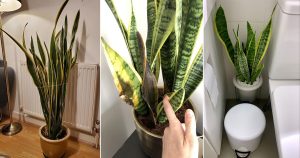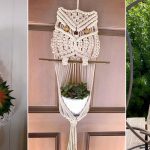If you love to have that sharp spiky look in plants, then this article is for you! Here we listed the best cacti with the biggest spines.
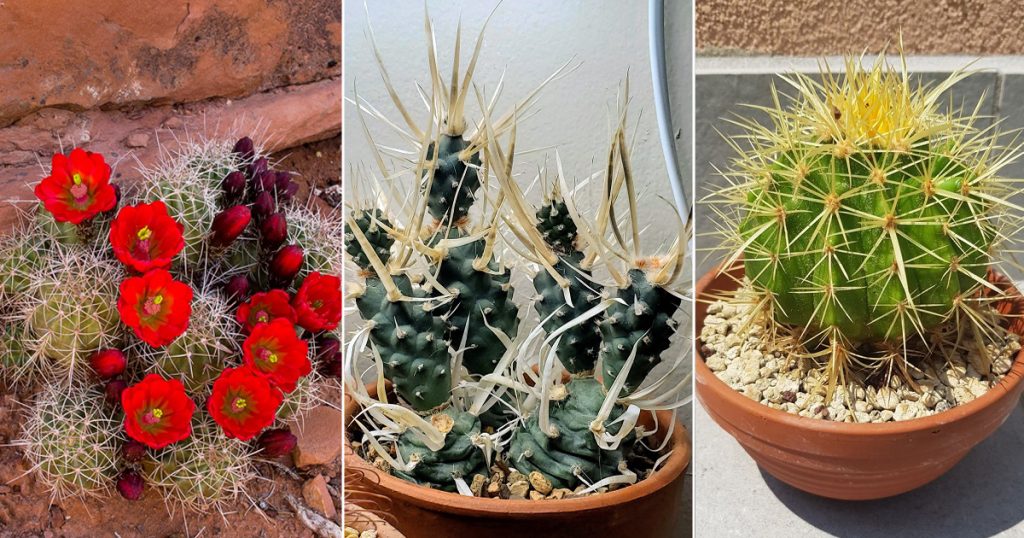
Cacti are tough and long-lasting plants. And those spines are like a shield for them. They look dangerous too, but at the same time, they’re the reason that makes them unique as well. So why not have some in your collection? Let’s explore them in this list of cacti with the biggest spines.
Cacti With the Biggest Spines
1. Paper Spine Cactus
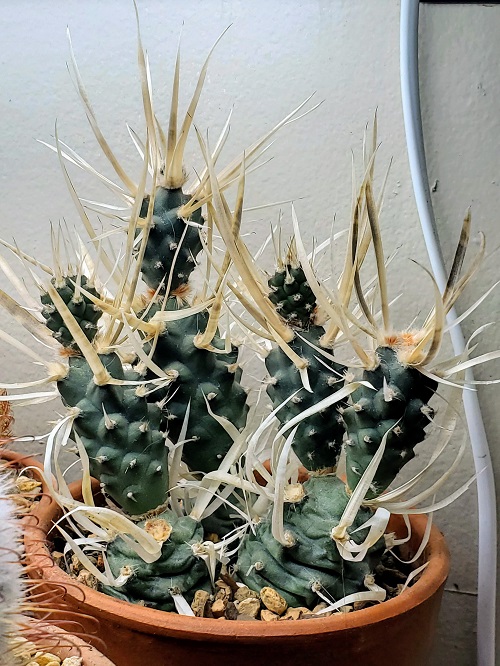
Botanical Name: Tephrocactus aoracanthus ssp. paedophiles
So this first one might seem scary, but it’s actually not. As the name suggests, the spines of this cactus are actually like paper.
This slow-growing, bushy cactus develops pinecone-like segments, which are basically its body, and these segments are loosely attached. As these grow vertically, you might find the stems being either silver or green in color, covered with soft, flat, ribbon-like, or paper-like spines.
Though this cactus rarely blooms unless it is in the wild, you might find bell-shaped white flowers with yellow centers, blooming from late summer to spring.
Fun fact: These spines are not just soft—they’re also detachable. So if you brush past it, the spine might come off like a dry leaf!
2. Golden Barrel Cactus
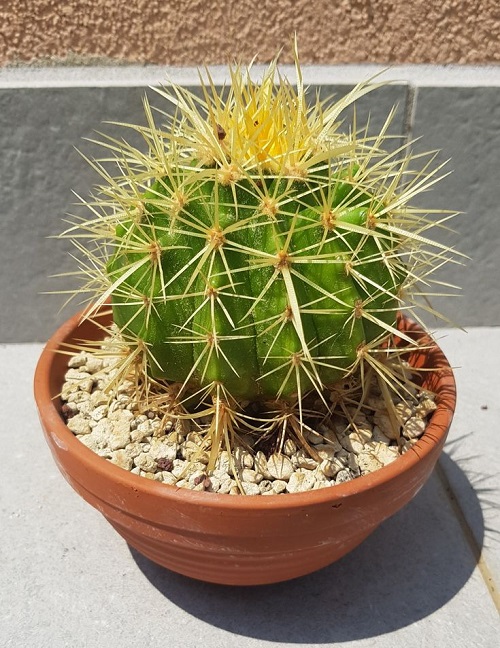
Botanical Name: Echinocactus grusonii
Did you know that this is an award-winning cactus? Like the Paper Spine, this too is a slow-growing cactus that showcases a barrel-shaped stem with prominent ribs. This is what gives the cactus its name. Plus, the stems have structures called “areoles” from which you will see golden spines sprouting.
If you grow this plant in your collection, ensure it gets full sun so you can enjoy bright, gorgeous flowers from late spring to summer!
Landscapers love grouping them in clusters for a bold, spiky statement in arid gardens.
3. Devil’s Tongue Cactus
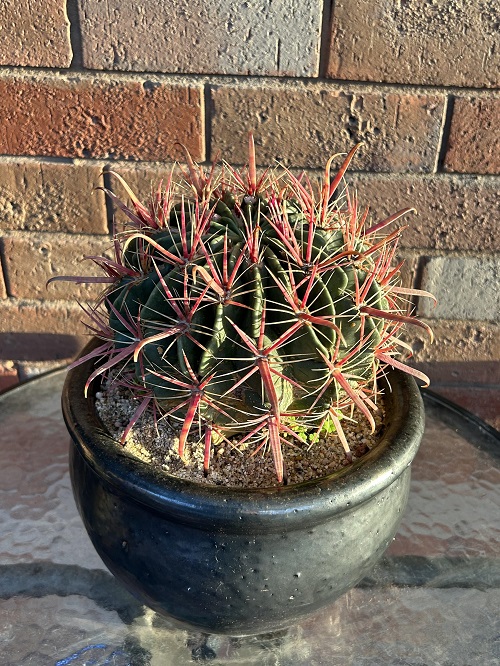
Botanical Name: Ferocactus latispinus
We have yet another barrel cactus, this time with quite an interesting name! This striking specimen is known for its wide, flattened spines that can be either red or yellow in color. Unlike the first two in the list, this one produces beautiful purple or yellow flowers in the fall, instead of spring or summer.
But what makes it an absolute favorite for desert gardens is its compact size and bold spines!
4. Brain Cactus
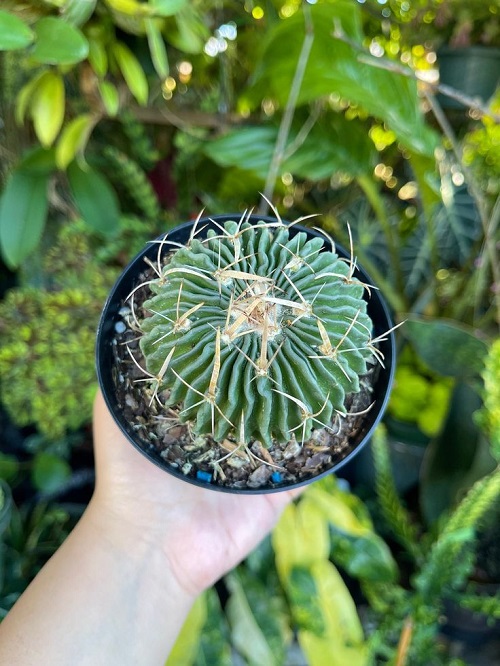
Botanical Name: Stenocactus multicostatus
Straight from Mexico, this small spherical cactus features many wavy ribs and spines all over its body, which gives it quite a unique appearance. Its wavy ribs and clustered spines give it a look that’s oddly brain-like. Being a cactus, it is of course, drought tolerant and loves the full sun.
Give it full sun and well-draining soil, and you’ll enjoy small, funnel-shaped flowers in shades of pink, purple, or white.
5. Claret Cup Cactus
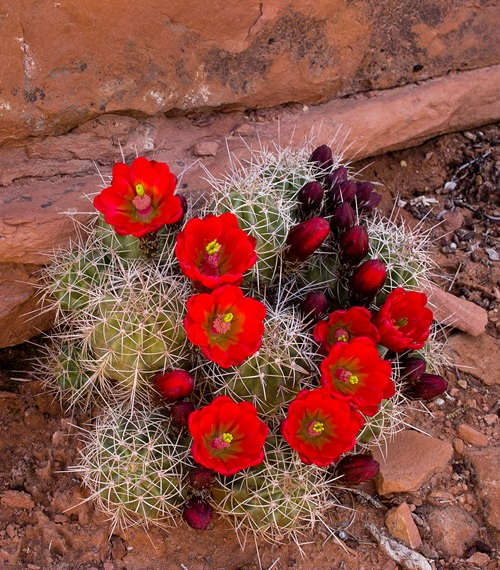
Botanical Name: Echinocereus triglochidiatus
Coming from the southwestern part of the United States, the Claret Cup is a clumping cactus, and quite a hardy one at that! With cylindrical stems and seemingly only painful spines, the main attraction of this cactus is actually the cup-shaped flowers that bloom in the brightest shade of red!
If you are planning a desert or rock garden, rest assured the drought-tolerant nature and striking blooms of this cactus will steal the show!
The blooms are also nectar-rich, so they are a favorite for hummingbirds and pollinators.
6. Spiny Pincushion Cactus
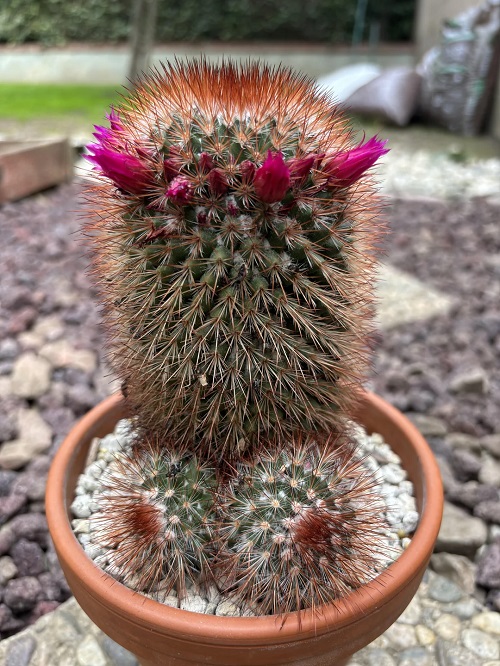
Botanical Name: Mammillaria spinosissima
For those who love smaller specimens of cacti, this one is for you! The Spiny Pincushion cactus is a small one, with cylindrical stems covered with dense radial spines, which are generally white. Plus, you will also see brown or red central spines on this species. Interesting, isn’t it?
In spring and summer, purple or pink flowers circle the spines, making the whole cactus look like it’s in full bloom!
It’s perfect for tabletop displays or terracotta pots and can even bloom indoors if it gets enough light.
7. Easter Lily Cactus
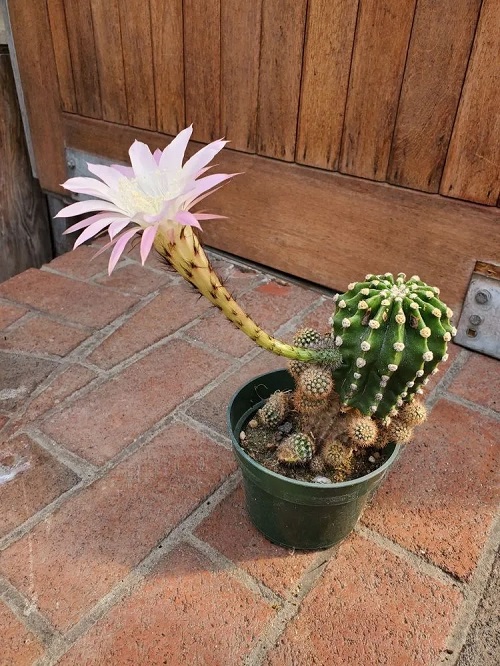
Botanical Name: Echinopsis oxygona
Another specimen with radial spines, you will see the globular Easter cactus flaunting quite long ones! Besides the spines, this cactus stands out because of its shape and also its prominently ribbed dark green stems.
During spring and summer, you will see this cactus bloom with large, trumpet-shaped flowers in various shades of pink or white. Interestingly, these night-blooming flowers are fragrant and short-lived, but truly stunning while they last.
They grow beautifully in containers, so grab a pot and give it a go!
8. Prickly Pear Cactus
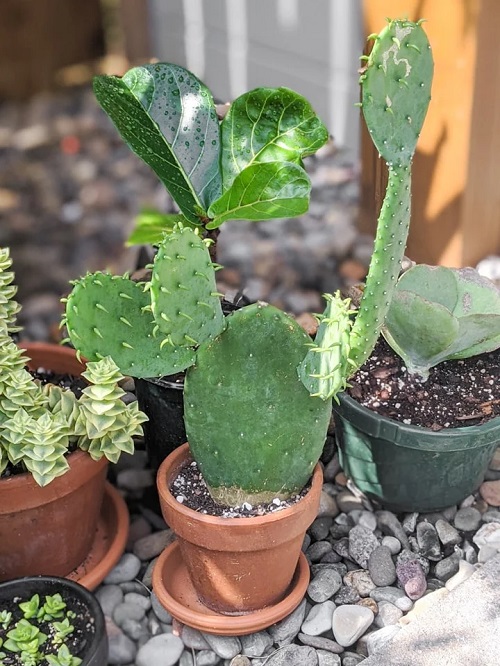
Botanical Name: Opuntia
You will love the rugged appearance of this cactus, which is rather well-known! Sought after for its paddle-like pads and bright, edible fruits, the Prickly Pear thrives in arid regions and hardly requires any care. If you are thinking of including it when xeriscaping, there can be no better choice than this!
Plus, you can always harvest the sweet, juicy fruits to amp up your culinary game. Did you know they also have potential health benefits? This is your sign to get a Prickly Pear today!
Note: While it may look tempting, always use gloves while handling—those tiny glochids can stick like fiberglass!
9. Fishhook Cactus
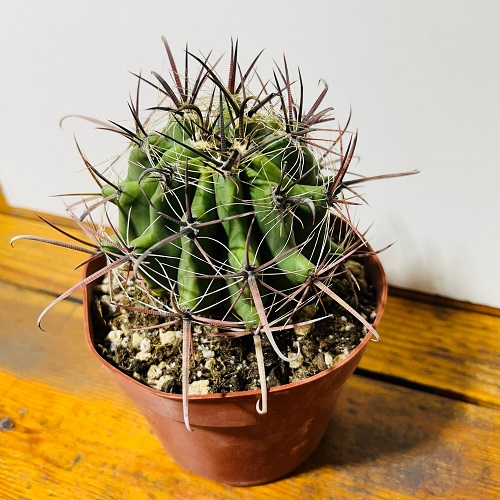
Botanical Name: Mammillaria microcarpa
Belonging to the family Cactaceae and genera Mammillaria, there is a lot of folklore surrounding this cactus. One important one is that the hook-like spines of this cactus are thought to be strong enough that many local and indigenous peoples throughout the Americas used them as actual fishing hooks!
Native to warmer regions of the Caribbean and Latin America, it thrives best outdoors. It is globular or cylindrical in shape and looks amazing when grown in pots. You can especially enjoy the “fish hook” spines arising from specialized buds called “areoles”.
It also blooms with charming pink flowers that appear in a crown-like ring around the top of the plant—like a cactus wearing a tiara!
Which of these cactus caught your eye and which are you planning to add to your home or garden? Let us know in the comments below!




